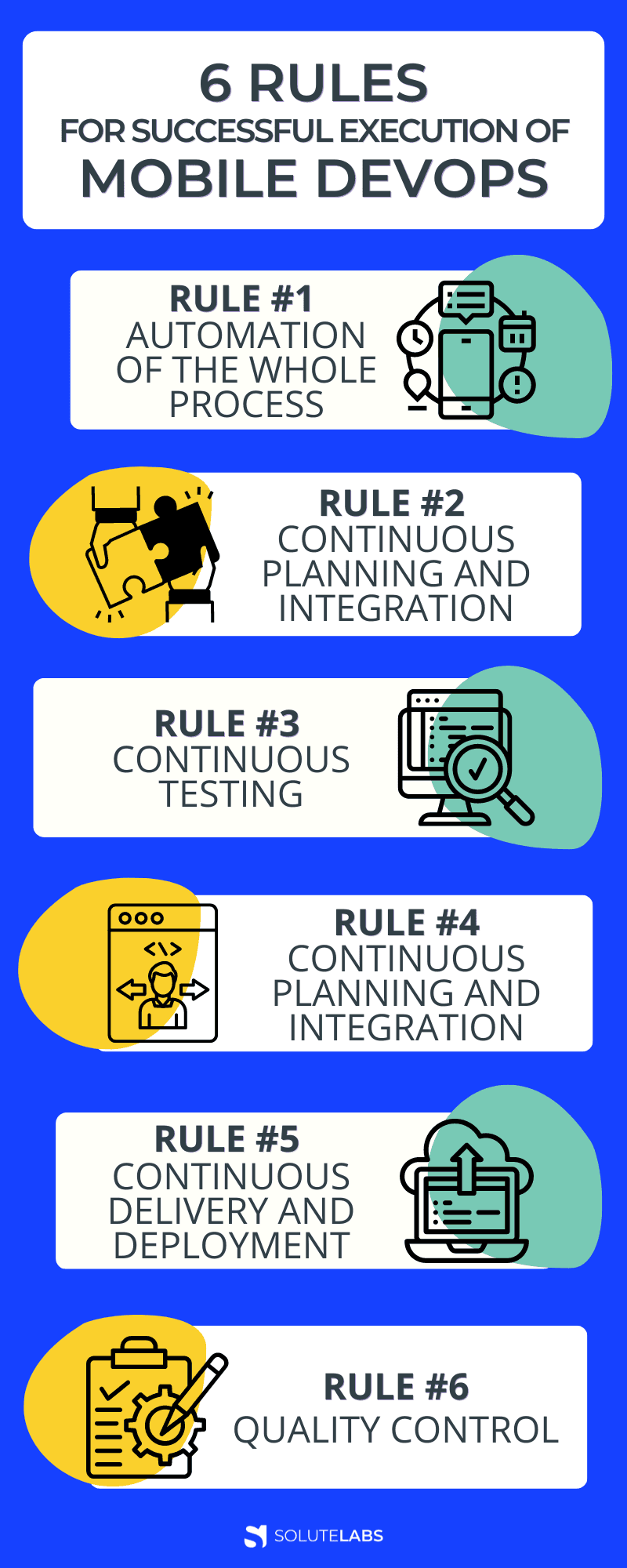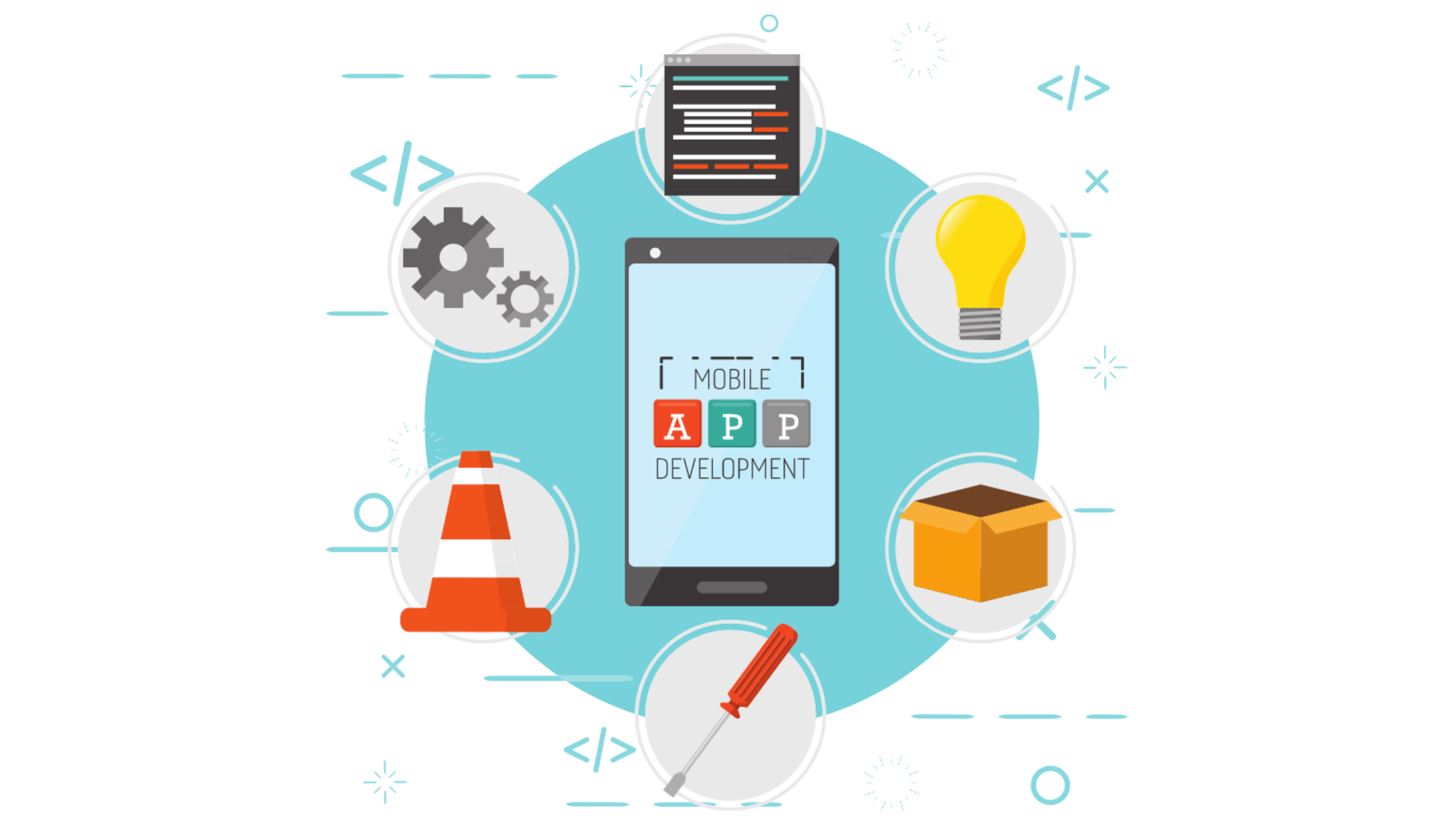With many mobile applications crossing the billion-dollar mark, it is no longer surprising to find more and more enterprises trying their hands at mobile app development. But, building high-end apps does come with its own set of complications.
Everything from choosing a suitable platform for development to developing an innovative and valuable app requires that you have a DevOps team as a partner in your mission. After all, traditional ways of working are far from enough in the world of complex technologies.
But what is DevOps, and how can it help mobile app development? Read on to find out more.
What is DevOps?
DevOps is a cultural and professional movement. It emphasizes collaboration, communication, and integration between software developers and information technology (IT) professionals.
DevOps aims to improve application development and delivery processes. It involves promoting cultural change, sharing best practices, automating manual tasks, and implementing tools.
It's not just about putting developers on the same team as their counterparts in IT operations. It's about breaking down the silos so they can work together more effectively.
DevOps helps enterprise organizations build software while maintaining high-quality standards. It supports continuous testing, deployment automation, security and monitoring, metrics analysis, and more.
The methodology of DevOps combines its principles with agile development methodologies such as Scrum or Kanban to help organizations achieve a faster time-to-market for new features or products.
Also, Read: Enterprise DevOps Solutions - How DevOps Works for Enterprise?
DevOps in Mobile Applications
Mobile apps are the fastest-growing component of the software industry. According to Evansdata, the number of app developers is expected to increase by 20% in the next two years. This segment has a huge demand for mobile applications and a high turnover rate.
DevOps helps mobile applications improve their productivity. It allows developers to focus on building great products instead of worrying about infrastructure management or scaling issues once the product goes live.
But, there are specific challenges related to DevOps for mobile applications. Let's understand a few of them.
Challenges with Mobile DevOps
1. Different OS version
The Android ecosystem is the most mature, with many versions of Android in use today. iOS is also maturing and has a much smaller user base than Android, but it's still growing with each new release.
There are currently three major operating systems:
- iOS (for iPhone and iPad)
- Android (for smartphones and tablets)
- Windows Phone (for smartphones)
Each operating system has several versions, making it tricky to test your app across all versions. These differences make it difficult for developers to create applications that work across all devices.
For example, if you develop an application for Android 7+, you need to test it on newer versions such as 10+. Testing your application on different OS versions means testing against more devices. This increases costs because you have to pay for more devices or buy more virtual machines (VMs).
2. Hardware
The hardware of a mobile device varies from device to device. This makes it difficult for developers to create one application that works across all devices. The screen size, chipset, storage, and RAM vary from device to device, and so does how users interact with their smartphones or tablets.
For example, if you're developing an iPhone app, it's important to test on different screen sizes (5.5 inches vs. 6 inches vs. 6.7 inches). There are also variations within each model depending on whether it's an iPhone X or 12 Pro or an iPad mini 2 or 3.
This leads to all sorts of problems, from slow feedback cycles to developers having to wait weeks or months before being able to test their apps on real devices.
3. Keeping a balance between App Quality and Consumer Demands
Mobile DevOps development is all about speed, but sometimes it's more important to slow down and ensure your app works properly before releasing it to customers. Many organizations struggle with balancing speed and quality related to mobile DevOps.
New features in mobile apps might not be tested before they're pushed out to customers if there aren't enough resources available in your organization. This is a considerable concern for companies that rely on user reviews or consumer feedback as part of their product strategy.
Also, read: 6 Best Mobile DevOps Platforms for Faster Application Development
6 Rules for Successful Execution of Mobile DevOps

1. Automation of the whole process
Mobile DevOps is about automating everything: from requirements gathering and design to execution and monitoring. This way, you can deliver high-quality applications faster than ever while ensuring they meet all business requirements and user expectations.
Create an automated pipeline on every commit or merge request (MR). That way, you'll know if there are any problems before they get into production.
Use a CI/CD tool like Jenkins or TeamCity to manage your build pipeline. It will allow you to execute tests on every commit or MR in your codebase, preventing errors from getting into production-ready builds.
Also, Read: Top 21 DevOps Monitoring Tools To Use in 2022
2. Continuous planning and integration
Mobile DevOps is not about making sure that you have all the required resources at hand. It's also about planning your projects so that you don't have to wait for them or dedicate extra resources when needed. You can see where things stand at any given time, which makes it easier to adjust plans if necessary.
Planning involves identifying your app's requirements and ensuring they're met throughout the development lifecycle. It also includes defining who will work on each development phase, how much time it will take, and what resources you need.
Integration involves creating a single source of truth so that everyone involved in the process can see what's happening. It also ensures that any changes made in one development phase are pushed forward to the next stage without manual intervention or additional testing.
3. Continuous testing
It’s important to do testing throughout the software development lifecycle (SDLC), especially after every major code change or feature addition. It's done so that developers can identify issues as they arise or before they end up in production.
Continuous testing helps you identify bugs and fix them before they reach users. It provides constant feedback on the quality of your code so that you can resolve issues early in the development cycle.
Automated tests are beneficial when scaling operations across different teams or locations. When running new builds on servers or devices, you can run them without human intervention or expensive infrastructure changes.
By integrating your testing tools with your CI/CD toolchain, you can automate tests at every stage of development and release them into production environments as soon as they pass.
4. End-to-end responsibility
Mobile DevOps aims to bring together all the teams involved in mobile app development under one umbrella. This helps ensure everyone is on the same page regarding goals, objectives, and timelines so they can work together as efficiently as possible.
In mobile DevOps, all team members are responsible for ensuring quality at every stage of development. This helps reduce defects and increases customer satisfaction with the end product.
The best way to reduce the time it takes to develop an app is to divide the work into small chunks and assign them to different teams.
Each team should be responsible for one aspect of the product—the front or back end, for example—rather than trying to do everything. This approach helps reduce delays and makes communication easier for different teams.
5. Continuous delivery and deployment
Continuous delivery means submitting each change to an environment that simulates a production environment. It ensures that the code gets sent to the production environment.
To implement these processes, you need an automated testing environment where all your tests will run well before any deployment occurs.
After continuous delivery, the next phase of continuous deployment begins. Every modification that has passed continuous testing is deployed to the production environment in constant deployment.
Continuous deployment ensures that new features are always available without waiting for QA approvals or manual testing cycles.
6. Quality control
You can't have an effective continuous delivery pipeline if it's not built on a solid foundation of quality assurance testing.
Quality control should be baked into each process step: from development through testing to deployment. This will ensure that every release of your app meets your standards for quality, regardless of whether it was developed internally or by an outside vendor.
It’s imperative to measure and validate every aspect of the code from conception through delivery, along with any changes made in the middle. It’s also crucial to continually check user reviews and ratings on the app store. It helps solve issues and clears the way for upcoming adjustments and modifications.
Also, Read: DevOps Vs DevSecOps
Wrapping Up
Mobile app development poses various challenges to automation, scalability, speed, and cost-effectiveness. One way to deal with these in the software life cycle is DevOps, which generally aims to streamline the application development process by managing multiple environments.
Adopting DevOps for mobile apps involves hurdles, but measurable rewards make the process worthwhile. Overall, despite the expense of developing an app and its initial difficulties, the advantages of DevOps justify the investment.







